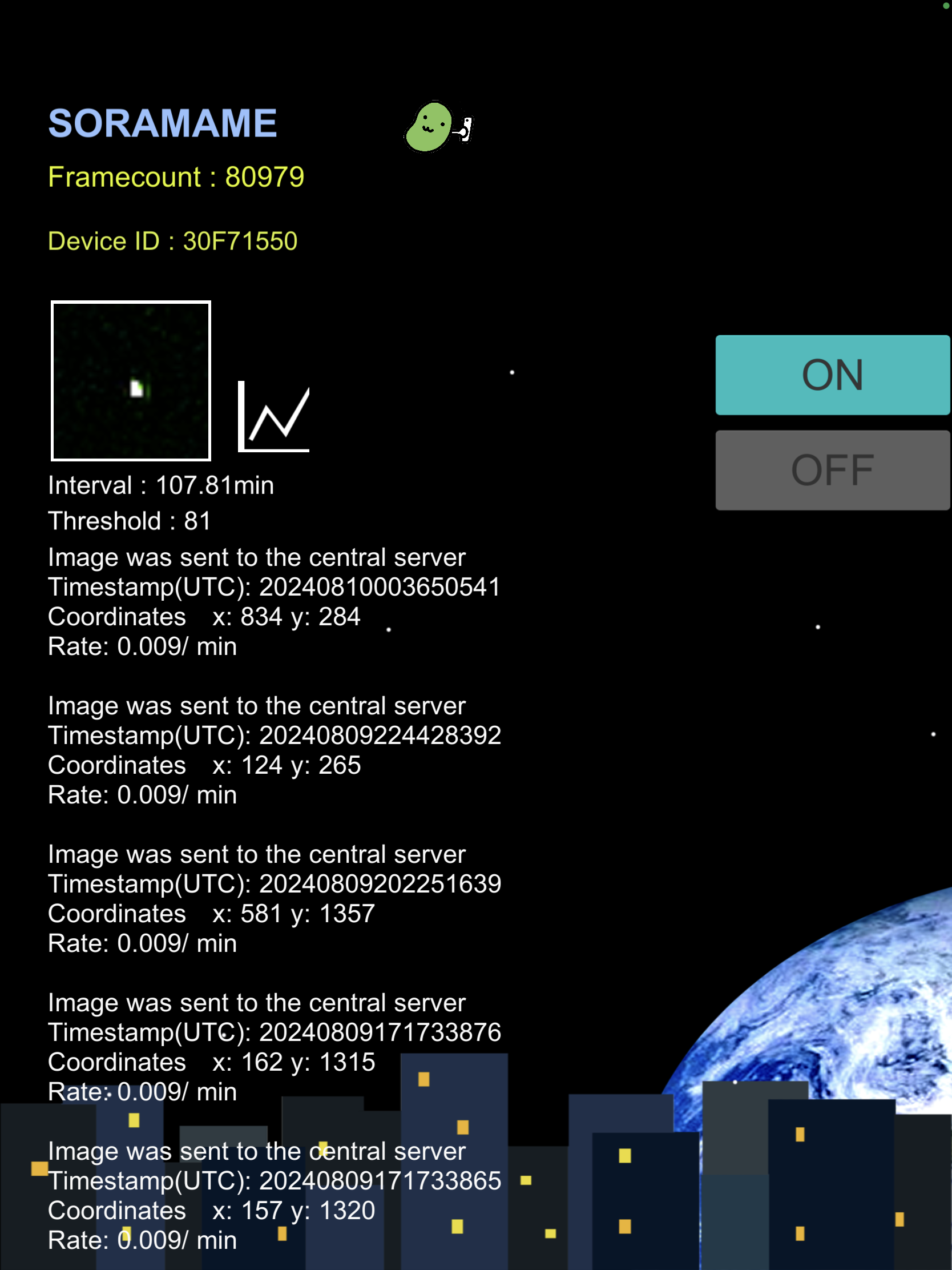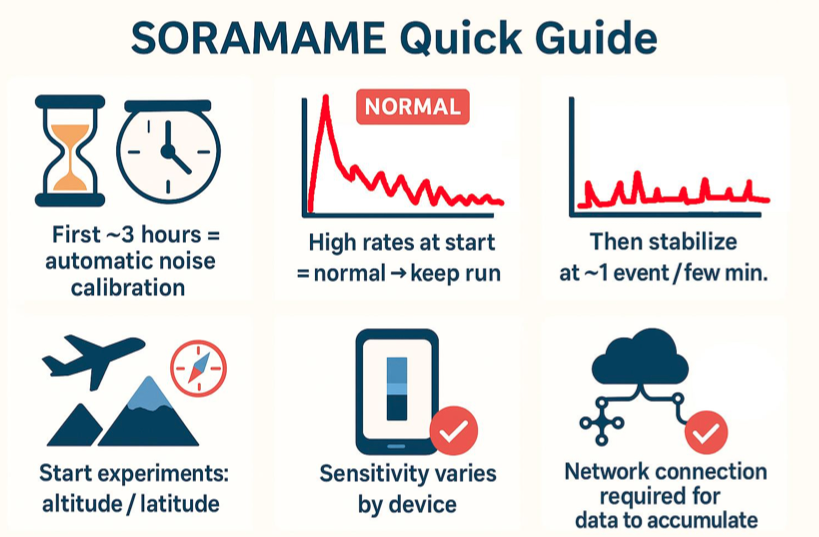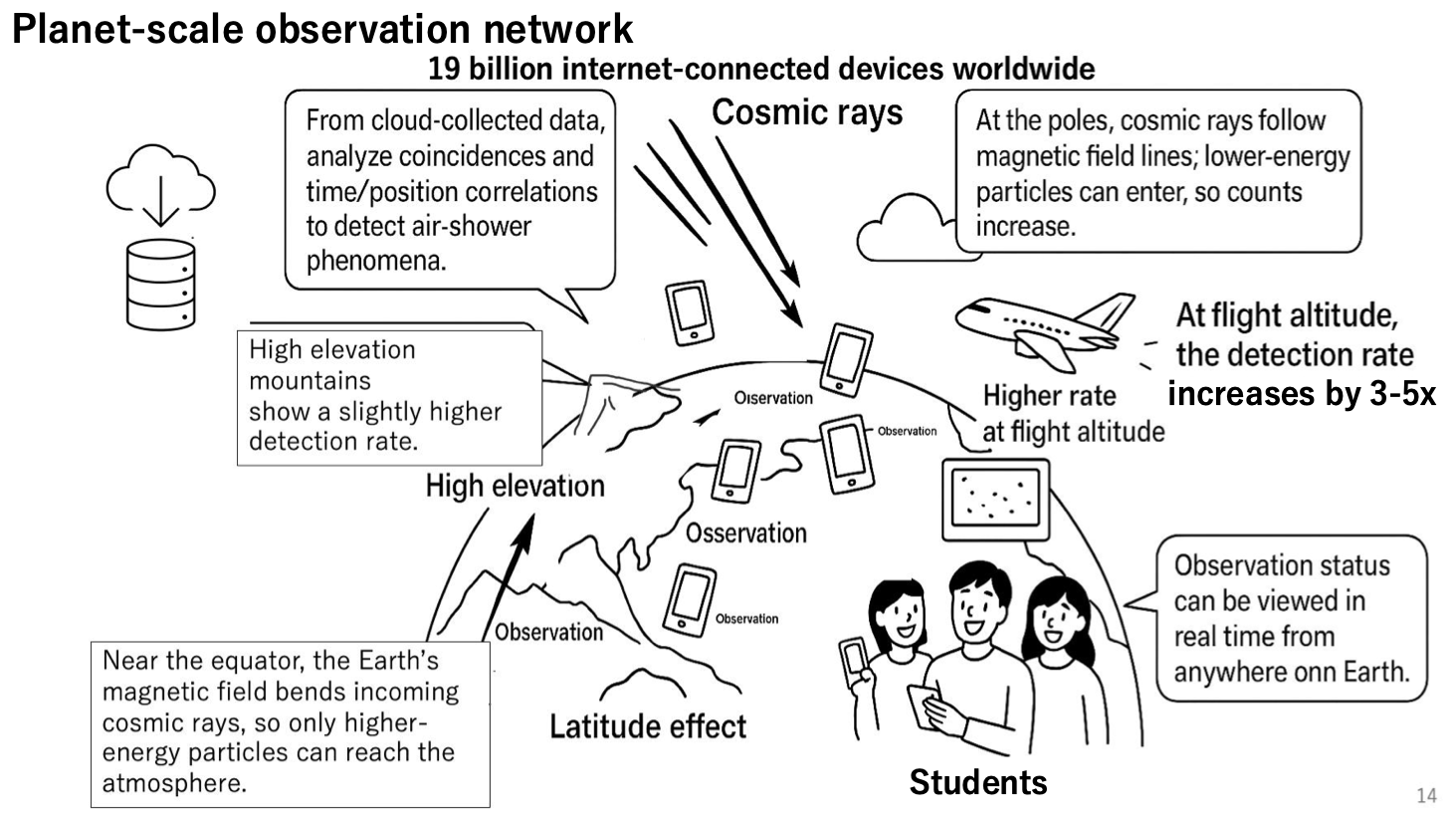Soramame: A Cosmic Ray Observation App for iOS and Android
Cosmic rays are important targets of observation that can provide insights into the origins of the universe and high-energy astrophysical phenomena. Traditionally, their detection has required specialized and expensive equipment. Focusing on the characteristics of CMOS image sensors installed in smartphones and tablets, we developed the app “Soramame”, which enables simplified cosmic ray detection using general consumer devices.
When high-energy charged particles from space strike the CMOS sensor, they generate tiny amounts of electrical charge. The Soramame app captures these signals as images and visualizes them in real time. The detected data is also transmitted to a cloud server, allowing users to view events detected by others via a shared web platform.
Because Soramame allows cosmic ray detection without specialized equipment, it is highly suitable for educational use. Since detection relies on rare and spontaneous events, long-term observation is important. We encourage the use of unused smartphones or tablets to enable continuous data collection.
From an educational perspective, the ability to detect and observe invisible cosmic rays with one's own hands deepens understanding of physical phenomena and fosters scientific curiosity. By altering conditions such as altitude, shielding, and time of day, students can collect and compare data, making the app suitable for inquiry-based learning and data-driven science education.
The app also includes a data sharing feature, allowing users to compare observations from different regions. This enables collaborative learning and supports citizen science activities. In the future, we plan to enhance detection accuracy, integrate more closely with educational curricula, and improve data analysis features to further increase the app's educational value.
Soramame is developed by the Hibino Laboratory, Department of Applied Physics, Faculty of Engineering, Kanagawa University. We hope it will serve as a tool that bridges research and education, and that it helps deepen public understanding and interest in science.
Repurposing Unused Smartphones for Scientific Exploration
Globally, there are now over 19 billion internet-connected devices, including tablets, laptops, and smartphones. With new models released nearly every year, many devices are replaced within just a few years. But what happens to these devices once they are no longer in everyday use?
Despite their compact size, these devices are highly advanced computers, equipped with a range of valuable components. One of the most important is the camera sensor—found in nearly all smartphones and tablets. This silicon-based semiconductor, known as a CMOS image sensor, plays a key role in the development of the Soramame cosmic ray detection app.
Why not breathe new life into an old smartphone or tablet by using it for scientific discovery? With Soramame, you can contribute to cosmic ray observation and turn an unused device into a tool for space science exploration.

App Screen
- Tracks from charged particles are displayed in real time as images.
- Track candidate locations are shown as rings on the screen.
- Each ring represents a detection position on the sensor.
- Uneven ring distribution may indicate noise or edge-related bias.
- Detected events are uploaded to the cloud server in real time.
- Rings gradually shrink and disappear over a period of 12 hours.




